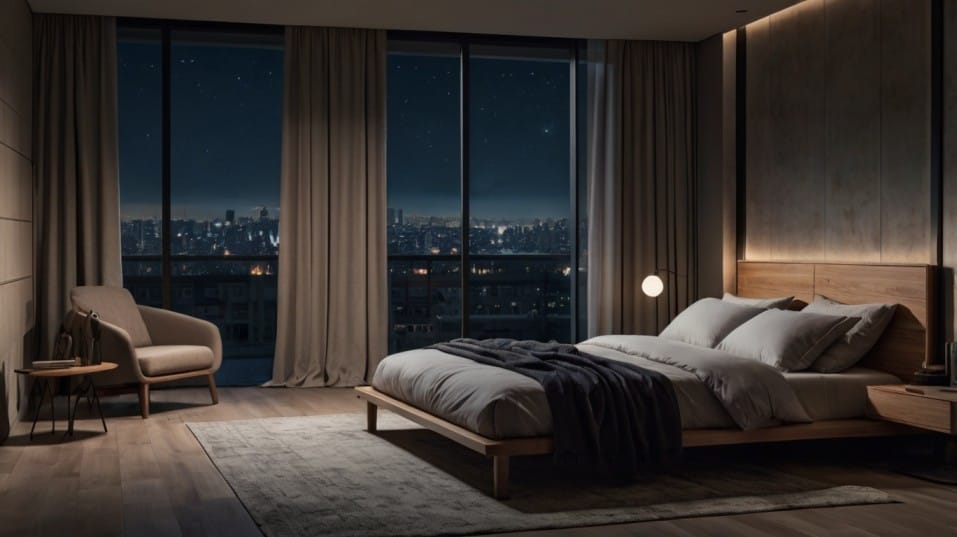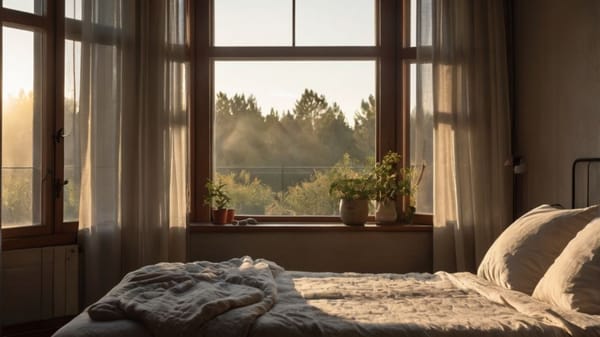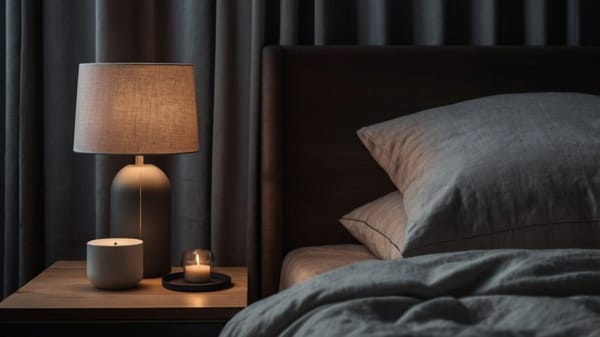How to Sync Sleep with Your Recovery Goals
Unlock faster recovery and stronger performance by syncing your sleep to your body’s natural rhythms—no extra hours or stress required.

What if the real key to faster recovery isn’t a new supplement or training tweak—but fixing your sleep?
If you’re eating clean, training smart, maybe even hitting cold plunges, but still feeling drained or stalled, your recovery system might be misfiring.
Not from lack of effort—but misalignment. When your sleep supports your body’s natural recovery cycles, everything starts to click. Gains accelerate, energy returns, and your system stops fighting itself.
The Recovery-Sleep Connection: Why It’s Non-Negotiable
Sleep isn’t downtime. It’s your body’s most anabolic state.
Deep sleep is when muscle fibers knit themselves back together, when growth hormone surges, when your brain clears out metabolic junk so you can focus again tomorrow. REM sleep helps consolidate motor skills and supports neurological recovery.
These stages are triggered by specific patterns in your sleep cycle—and if those patterns are shallow, inconsistent, or cut short, your recovery takes the hit. Even the most optimized workout routine can’t out-train poor sleep.
One night of subpar rest won’t wreck your gains, but chronic under-sleeping (less than 7 hours for most adults) quietly delays tissue repair, increases inflammation, and limits adaptation.
You won’t necessarily feel wrecked—but you’ll plateau faster, and your mental edge will start to slip.
Want faster muscle recovery? Stronger immune resilience? Better glucose regulation? It all runs through sleep.

Train Your Body Clock Like You Train in the Gym
Your body doesn’t guess when to recover—it follows signals.
Your circadian rhythm is a 24-hour internal timer that controls sleep-wake cycles, hormone release, core temperature, and even gene expression. To recover better, you’ve got to sync with that clock—not fight it.
Anchor Your Wake Time
Start by anchoring your wake time. Yes, wake time. Not bedtime. Wake up at the same time daily—even on weekends—and your body starts predicting when to wind down.
That leads to faster sleep onset, deeper sleep stages, and more consistent energy the next day. Your internal rhythm thrives on regularity, not perfection.
Control Light Like a Pro
Light is your strongest external cue. Morning sunlight, especially within the first hour of waking, acts like a reset button for your circadian clock.
Go outside, no sunglasses, even if it’s overcast. You don’t need to stare at the sun—just let natural light hit your eyes.
At night, reverse it. Ditch overhead lighting in favor of warm, low-intensity bulbs. Screens? Shift them to night mode or throw on blue-light blockers after sunset. The goal is to tell your brain: “It’s time to start shutting things down.”
Build Recovery from the Ground Up—With Movement and Fuel
Better recovery starts long before your head hits the pillow. Movement is a powerful regulator of your sleep architecture.
But timing matters. High-intensity exercise too close to bedtime can delay melatonin production and elevate cortisol—making it harder to transition into deep, restorative sleep.
If you can, get your hardest sessions done before late evening. If night workouts are your only option, finish at least 2–3 hours before bed and cool down thoroughly.
Eat to Repair, Not to Overload
What you put in your body during the day also influences how well it repairs itself at night.
High-protein diets support muscle repair, but loading up on calories right before bed—especially fats and heavy meats—can disrupt slow-wave sleep by elevating core body temperature.
On the flip side, carbs in the evening can actually help. They promote the release of tryptophan and serotonin, both precursors to melatonin. Think small portions of oats, sweet potatoes, or fruit if you need something post-dinner.
Hydration Timing Matters
Hydration matters too—but frontload it. Slamming water before bed guarantees interrupted sleep. Instead, hydrate aggressively throughout the day and taper off by early evening.
Turn Your Bedroom into a Recovery Lab
Sleep hygiene isn’t just a wellness buzzword—it’s the blueprint for recovery. Your brain and body need the right environment to drop into deep sleep consistently.
Think of your room like a high-performance lab: it should be cool, dark, and distraction-free.
Make It Cool
Cool means 60–67°F (16–19°C). Your core temperature naturally drops at night. If your room is too warm, you fight that drop—and sabotage deep sleep in the process. Use breathable bedding and ditch memory foam if it traps heat.
Make It Dark
Dark means no ambient light. Your skin and eyes are light-sensitive even when closed. Use blackout curtains or a sleep mask. If you need night lighting, keep it red or amber and dim.
Make It Quiet
Quiet doesn’t always mean silence. A steady hum from a fan or white noise machine can mask environmental disturbances. If you live near traffic, train tracks, or noisy roommates, use sound masking as armor.
Leave your phone out of the room or at least put it on “Do Not Disturb.” The goal here is psychological as much as physical: this space exists for recovery. No doomscrolling. No checking emails. Just rest.
Habits That Lock in Long-Term Gains
You don’t need a perfect bedtime routine to sleep better. You need a repeatable one. A wind-down ritual tells your nervous system to switch from fight-or-flight to rest-and-repair.
This isn’t about bath bombs and herbal tea (unless that’s your thing). It’s about creating a clear signal that your day is done.
Rituals That Work
Stretch lightly. Journal for five minutes. Read fiction. Breathe deeply for 90 seconds. Anything that tells your body, “We’re safe. We’re done.” Do it at the same time every night, and the effects stack fast.
Control Your Stimulants
Caffeine is another killer for recovery sleep. You don’t need to quit coffee—just time it better.
Caffeine has a half-life of 5–8 hours, which means your afternoon pick-me-up is still active when you’re trying to wind down. Keep your last cup before 2 PM if you want your sleep to serve your goals.
If you’re training hard and still waking up tired, track your sleep—not obsessively, but strategically. A wearable can help identify if you're missing deep or REM sleep.
Just don’t chase metrics blindly. Use them to adjust behaviors, not stress about perfect scores.
Final Thoughts
Better sleep is better recovery. It doesn’t require supplements, hacks, or gimmicks—just alignment. Sync your body clock, respect your environment, move intentionally, fuel wisely, and build a wind-down routine that sticks.
You don’t need to do it all tonight. Start with one piece—go to bed 30 minutes earlier, get morning light, or shut off screens an hour before sleep.
The results will come faster than you think. More strength. More clarity. More capacity to push, perform, and repair. Recovery starts before your workout ends. Start syncing now.




